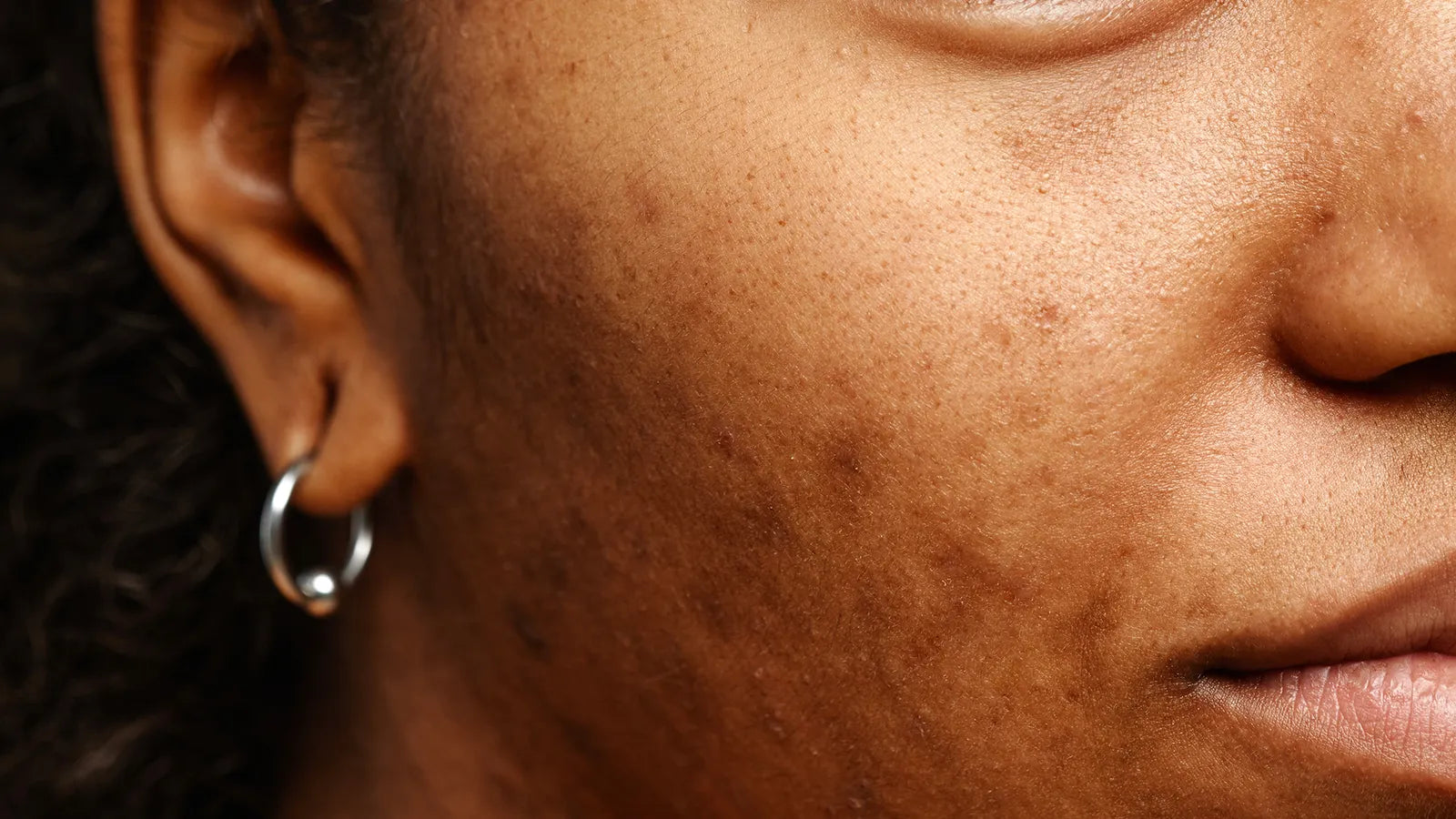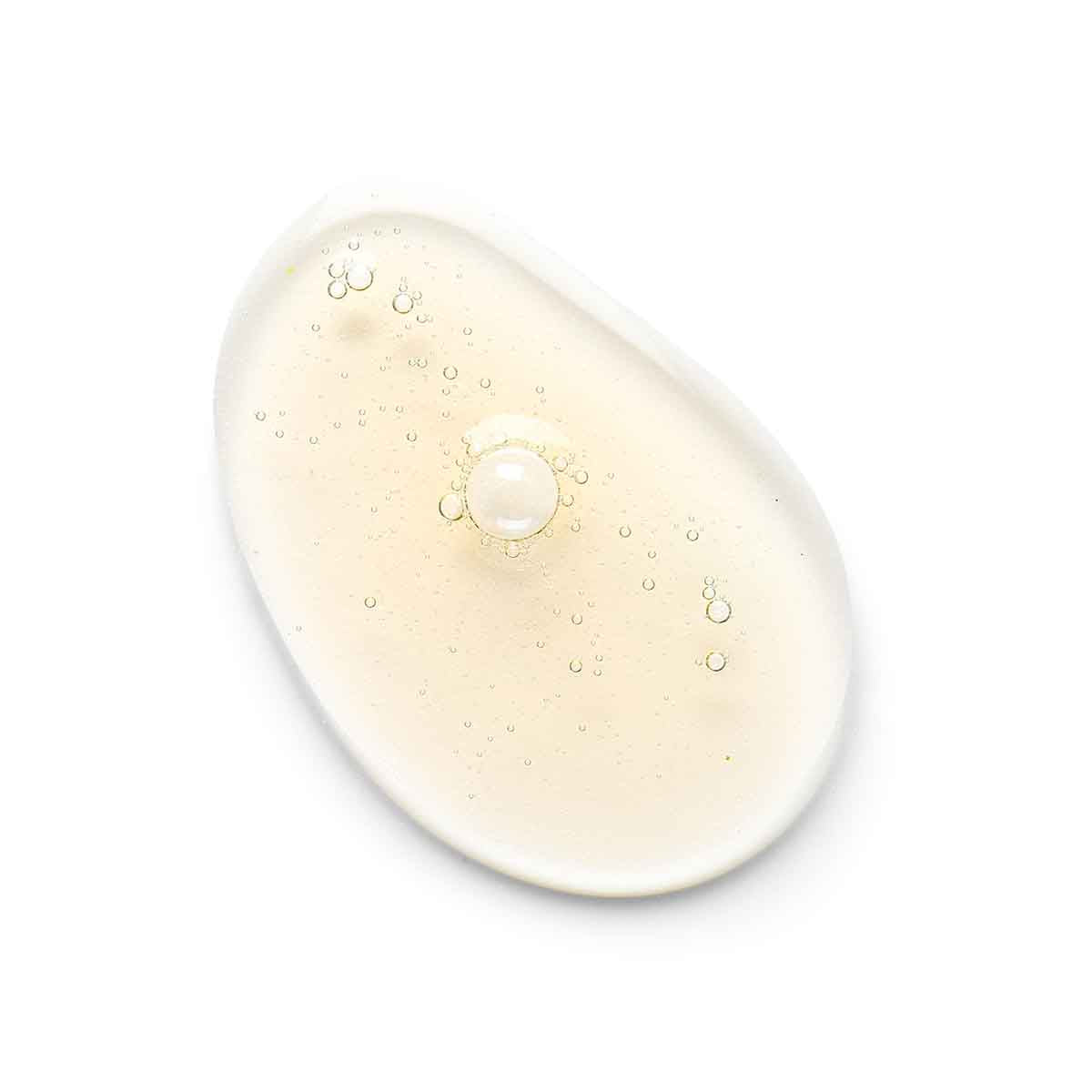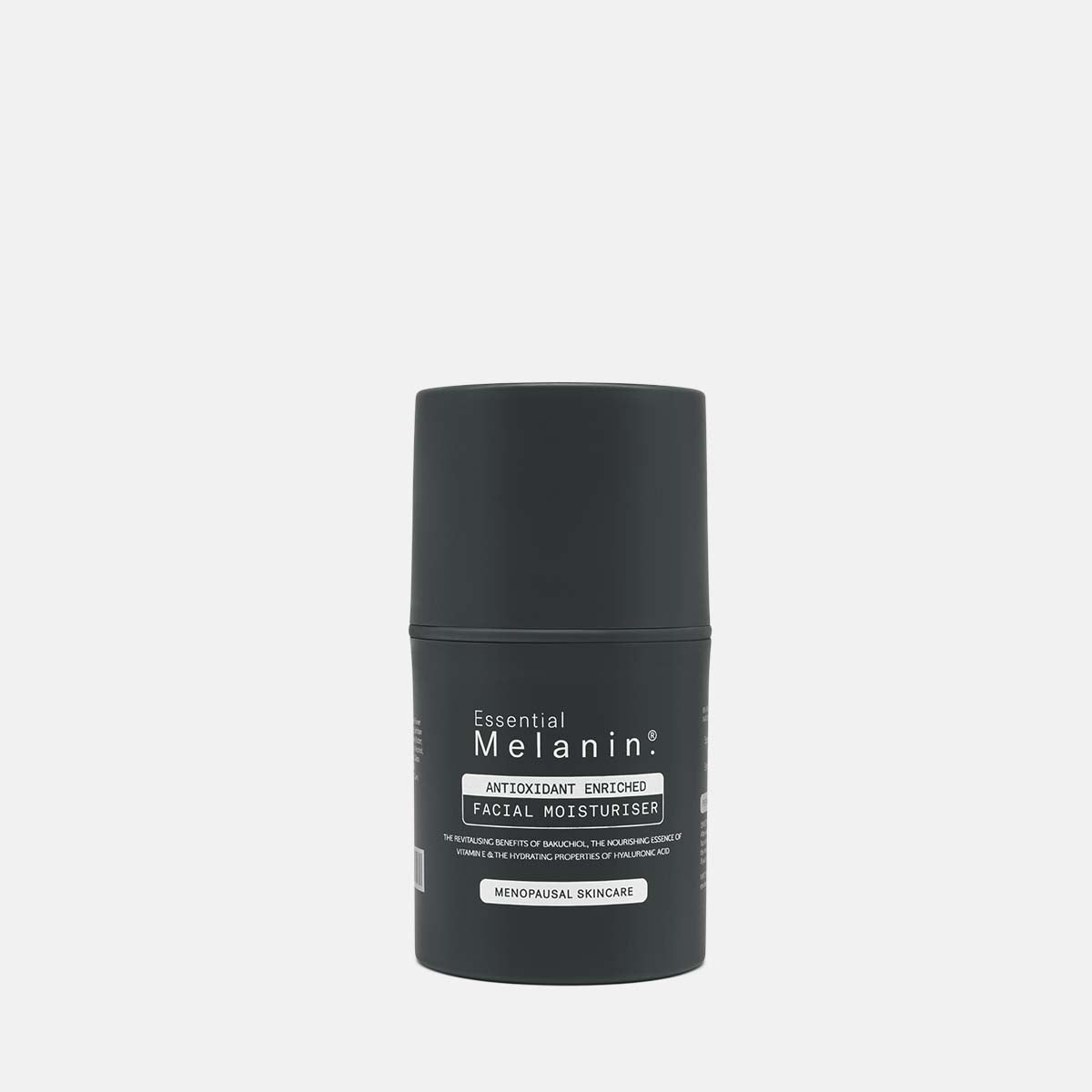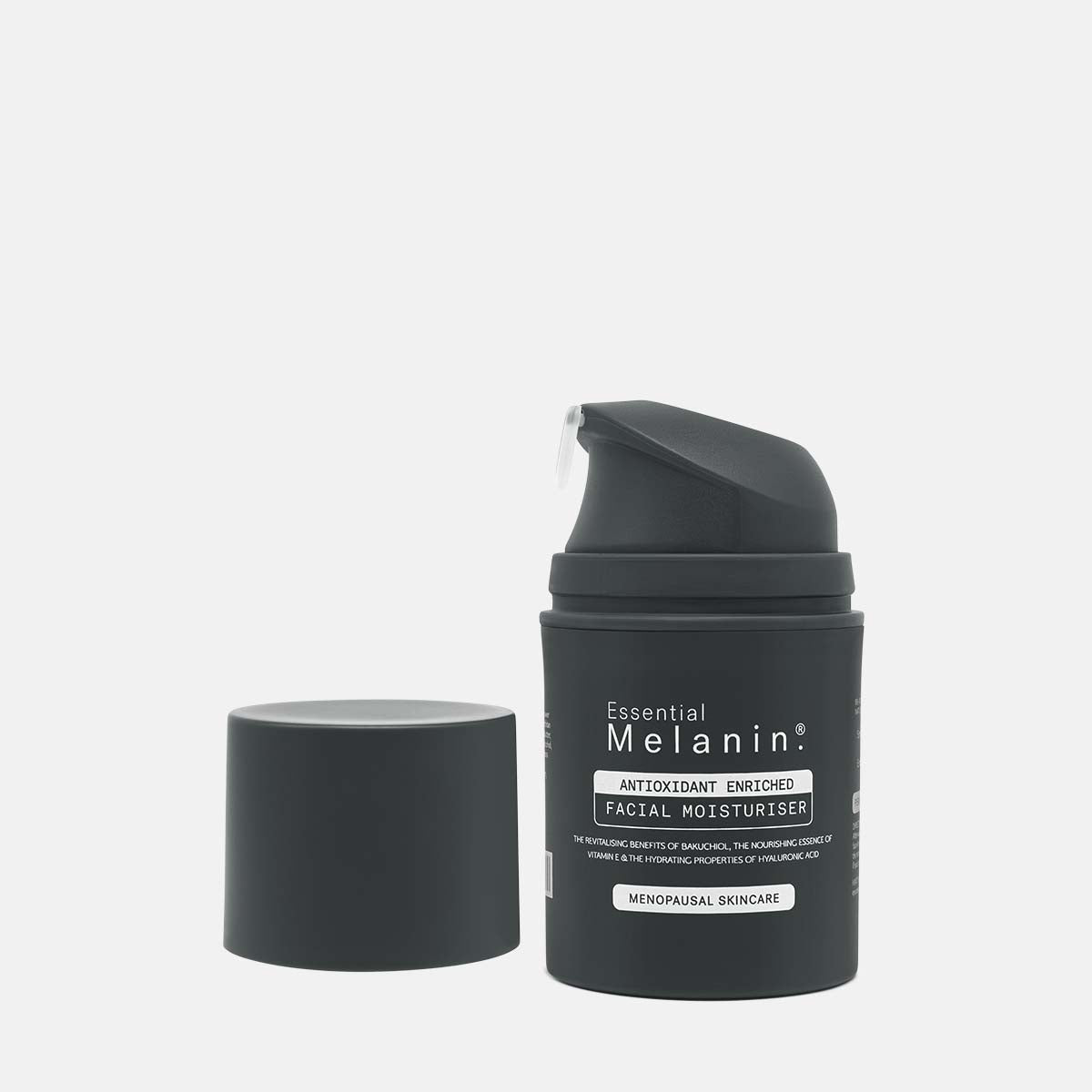Collection: Uneven Skintone
THE FACTS

What is Uneven Skin Tone?
Uneven skin tone is a common concern during menopause and can encompass various types of skin discoloration, such as dark spots, melasma, sun spots, and post-inflammatory hyperpigmentation. It may also refer to uneven skin texture, including dry patches, built-up dead skin cells, fine lines, or blotchiness. Both uneven tone and texture are reflections of skin health and can result from several factors, including hormonal changes, UV exposure, pollution, and medications.
Causes of Uneven Skin Tone in Menopause
Hormonal Changes: During menopause, declining estrogen levels can lead to a decrease in collagen production and skin elasticity. This hormonal imbalance can also trigger an overproduction of melanin, the pigment responsible for skin color, resulting in dark spots and melasma.
UV Exposure: Long-term exposure to ultraviolet (UV) rays from the sun can cause sun spots and accelerate skin aging, leading to uneven pigmentation and texture. UV rays can damage the skin’s DNA, promoting the development of dark spots and blotchiness.
Environmental Factors: Pollution and other environmental aggressors can contribute to oxidative stress on the skin, leading to inflammation and uneven skin tone. Pollutants can penetrate the skin, causing damage and exacerbating discoloration.
Medications: Certain medications taken during menopause can increase the skin’s sensitivity to sunlight or cause pigmentation changes, contributing to an uneven skin tone.
What can you do?
To address uneven skin tone and texture during menopause, it is essential to adopt a comprehensive skincare routine that includes:
- Sun Protection: Use broad-spectrum sunscreen daily to protect the skin from harmful UV rays.
- Hydration: Keep the skin well-hydrated with our antioxidant enriched moisturiser that contains hyaluronic acid and other hydrating ingredients.
- Cleansing: Daily cleansing helps remove dead skin cells, promoting a smoother and more even skin texture.
- Brightening Treatments: Use our serum with ingredients like licorice root extract, vitamin C, and bakuchiol to reduce the appearance of dark spots and promote a more balanced complexion.
- Antioxidants: Incorporate antioxidant-rich products to protect the skin from environmental damage and support overall skin health.
By understanding the causes and adopting targeted skincare strategies, you can effectively manage and improve uneven skin tone during menopause, leading to a healthier, more radiant complexion.



UNEVEN SKIN TONE
Hydrate & Brighten - Facial Serum
- Regular price
- £35.00
- Sale price
- £35.00
- Regular price
- Unit price
- / per
Key Actives for Uneven Skin Tone: Bakuchiol (Natural Retinol), White Willow Bark Extract, Licorice Root Extract & Pomegranate Fruit Extract



UNEVEN SKIN TONE
Antioxidant Enriched - Facial Moisturiser
- Regular price
- £35.00
- Sale price
- £35.00
- Regular price
- Unit price
- / per
Key Actives for Uneven Skin Tone: Bakuchiol (Natural Retinol), Bisabolol, Licorice Root Extract & Vitamin E
| Naturally Formulated Menopause Skincare 🌱 |
| Naturally Formulated Menopause Skincare 🌱 |
| Naturally Formulated Menopause Skincare 🌱 |
| Naturally Formulated Menopause Skincare 🌱 |
| Naturally Formulated Menopause Skincare 🌱 |
| Naturally Formulated Menopause Skincare 🌱 |
| Naturally Formulated Menopause Skincare 🌱 |
| Naturally Formulated Menopause Skincare 🌱 |
| Naturally Formulated Menopause Skincare 🌱 |
| Naturally Formulated Menopause Skincare 🌱 |
| Naturally Formulated Menopause Skincare 🌱 |
| Naturally Formulated Menopause Skincare 🌱 |
| Naturally Formulated Menopause Skincare 🌱 |
| Naturally Formulated Menopause Skincare 🌱 |
| Naturally Formulated Menopause Skincare 🌱 |
| Naturally Formulated Menopause Skincare 🌱 |
| Naturally Formulated Menopause Skincare 🌱 |
| Naturally Formulated Menopause Skincare 🌱 |
| Naturally Formulated Menopause Skincare 🌱 |
| Naturally Formulated Menopause Skincare 🌱 |
| Naturally Formulated Menopause Skincare 🌱 |
| Naturally Formulated Menopause Skincare 🌱 |
| Naturally Formulated Menopause Skincare 🌱 |
| Naturally Formulated Menopause Skincare 🌱 |
| Naturally Formulated Menopause Skincare 🌱 |
| Naturally Formulated Menopause Skincare 🌱 |
| Naturally Formulated Menopause Skincare 🌱 |
| Naturally Formulated Menopause Skincare 🌱 |
| Naturally Formulated Menopause Skincare 🌱 |
| Naturally Formulated Menopause Skincare 🌱 |
| Naturally Formulated Menopause Skincare 🌱 |
| Naturally Formulated Menopause Skincare 🌱 |
| Naturally Formulated Menopause Skincare 🌱 |
| Naturally Formulated Menopause Skincare 🌱 |
| Naturally Formulated Menopause Skincare 🌱 |
| Naturally Formulated Menopause Skincare 🌱 |
| Naturally Formulated Menopause Skincare 🌱 |
| Naturally Formulated Menopause Skincare 🌱 |
| Naturally Formulated Menopause Skincare 🌱 |
| Naturally Formulated Menopause Skincare 🌱 |
| Naturally Formulated Menopause Skincare 🌱 |
| Naturally Formulated Menopause Skincare 🌱 |
| Naturally Formulated Menopause Skincare 🌱 |
| Naturally Formulated Menopause Skincare 🌱 |
| Naturally Formulated Menopause Skincare 🌱 |
| Naturally Formulated Menopause Skincare 🌱 |
| Naturally Formulated Menopause Skincare 🌱 |
| Naturally Formulated Menopause Skincare 🌱 |
| Naturally Formulated Menopause Skincare 🌱 |
| Naturally Formulated Menopause Skincare 🌱 |
| Naturally Formulated Menopause Skincare 🌱 |
| Naturally Formulated Menopause Skincare 🌱 |
| Naturally Formulated Menopause Skincare 🌱 |
| Naturally Formulated Menopause Skincare 🌱 |
| Naturally Formulated Menopause Skincare 🌱 |
| Naturally Formulated Menopause Skincare 🌱 |
| Naturally Formulated Menopause Skincare 🌱 |
| Naturally Formulated Menopause Skincare 🌱 |
| Naturally Formulated Menopause Skincare 🌱 |
| Naturally Formulated Menopause Skincare 🌱 |
| Naturally Formulated Menopause Skincare 🌱 |
| Naturally Formulated Menopause Skincare 🌱 |
| Naturally Formulated Menopause Skincare 🌱 |
| Naturally Formulated Menopause Skincare 🌱 |
| Naturally Formulated Menopause Skincare 🌱 |
| Naturally Formulated Menopause Skincare 🌱 |
| Naturally Formulated Menopause Skincare 🌱 |
| Naturally Formulated Menopause Skincare 🌱 |
| Naturally Formulated Menopause Skincare 🌱 |
| Naturally Formulated Menopause Skincare 🌱 |
| Naturally Formulated Menopause Skincare 🌱 |
| Naturally Formulated Menopause Skincare 🌱 |
| Naturally Formulated Menopause Skincare 🌱 |
| Naturally Formulated Menopause Skincare 🌱 |
| Naturally Formulated Menopause Skincare 🌱 |
| Naturally Formulated Menopause Skincare 🌱 |
| Naturally Formulated Menopause Skincare 🌱 |
| Naturally Formulated Menopause Skincare 🌱 |
| Naturally Formulated Menopause Skincare 🌱 |
| Naturally Formulated Menopause Skincare 🌱 |
| Naturally Formulated Menopause Skincare 🌱 |
| Naturally Formulated Menopause Skincare 🌱 |
| Naturally Formulated Menopause Skincare 🌱 |
| Naturally Formulated Menopause Skincare 🌱 |
| Naturally Formulated Menopause Skincare 🌱 |
| Naturally Formulated Menopause Skincare 🌱 |
| Naturally Formulated Menopause Skincare 🌱 |
| Naturally Formulated Menopause Skincare 🌱 |
| Naturally Formulated Menopause Skincare 🌱 |
| Naturally Formulated Menopause Skincare 🌱 |
| Naturally Formulated Menopause Skincare 🌱 |
| Naturally Formulated Menopause Skincare 🌱 |
| Naturally Formulated Menopause Skincare 🌱 |
| Naturally Formulated Menopause Skincare 🌱 |
| Naturally Formulated Menopause Skincare 🌱 |
| Naturally Formulated Menopause Skincare 🌱 |
| Naturally Formulated Menopause Skincare 🌱 |
| Naturally Formulated Menopause Skincare 🌱 |
| Naturally Formulated Menopause Skincare 🌱 |
| Naturally Formulated Menopause Skincare 🌱 |
Your Cart
0 Items
Your Cart is Empty.
Don't miss out on the best deals.
Subtotal
- Choosing a selection results in a full page refresh.

